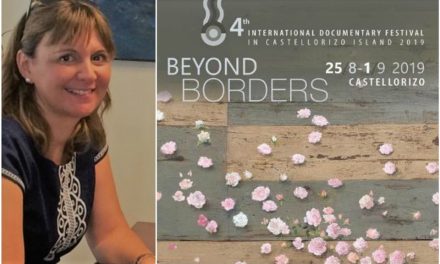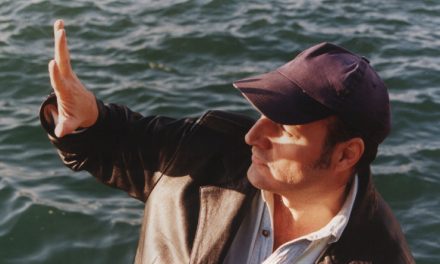Asteris Koutoulas. Photo by Guido Karp
Based on over 600 hours of filmed material starring Mikis Theodorakis in any possible situation, “Dance Fight Love Die: With Mikis on the road“ by Asteris Koutoulas is a hybrid film on the hybrid life of one of Greece’s most prolific figures, composer Mikis Theodorakis. For thirty years (between 1987 and 2017), Asteris Koutoulas organized many major Theodorakis concerts around the world, while he accompanied and occasionally filmed Theodorakis on his travels. This resulted in accumulated film footage of Theodorakis’ travels around the world. Koutoulas complemented this material with “fictional” shootings (filmed by DOP Mike Geranios) adding a subplot inspired by Theodorakis’ autobiography “The ways of the Archangel”. This docu-fiction film, an experimental portrait of the artist, offers an insight to lesser known aspects of Theodorakis’ personality, while it cites the universal influence of his music.
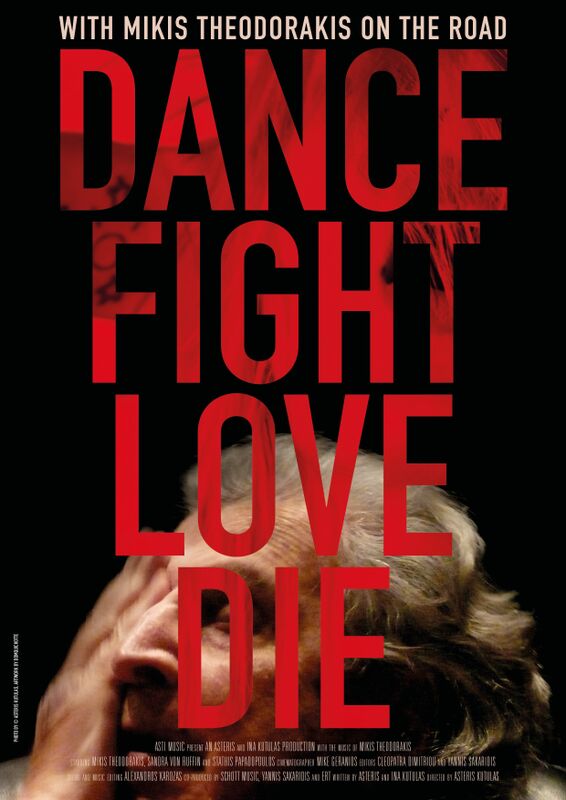
Asteris Koutoulas is a Berlin-based Greek-German music and event producer, publicist, filmmaker and author. Born to Greek political refugees in Romania in 1960, Asteris Kutulas and his family moved to East Germany in 1968. He graduated from Dresden’s Kreuzschule and went on to study German philology and history of philosophy at Leipzig University (1979–1984). Since 1981, he has translated numerous works of notable Greek authors into German. Asteris Kutulas has been working as a producer in the events industry since 1979. In 2014 Kutulas produced “Recycling Medea”, his first feature film, and “Dance Fight Love Die – With Mikis on the Road” in 2018. He has also initiated Hellas Filmbox Berlin, the first Greek film festival in the German capital in 2016
Asteris Koutoulas talked to Greek News Agenda* about his latest film, elaborating how he and his co-screenwriter Ina Koutoulas picked a completely new aesthetic approach that could capture and convey the vast musical and poetic cosmos of Mikis Theodorakis in a modern cinematic form, where diversity and experimentation are focal elements.
Mikis Theodorakis & Asteris Kutulas, East Berlin 1985 Photo © by Privatier Asti Music
Your latest film is the fruit of your collaboration with Mikis Theodorakis since the 80’s. You have been filming a huge volume of footage over these years. How and when did you decide to make a film?
The film was made after my wife and co-screenwriter Ina, had sat day in day out for over 9 months sifting through the 600 hours of film material covering a period of 30 years and documented it in detail. Rather than leaving it at that, she felt, naturally enough, that I should do something with this footage. Ina expected me to come up with something and she convinced me to develop the concept for this film on the basis of her preliminary work. It took me about 2 years. However, you have to know that Klaus Salge and I had already produced a classic documentary about Theodorakis for the television station ARTE in 2010, which has been shown frequently on television and at various film festivals. It is called “Mikis Theodorakis. Composer“. Apart from this there are more than 40 documentaries that have been made around the world over the last few decades, mainly on the biographical and political aspects of the extraordinary life of Mikis Theodorakis. So, Ina and I could now pick a completely new aesthetic approach that could capture and convey the vast musical and poetic cosmos of this unique artist in a very modern and meaningful cinematic form. This otherness, this enormous diversity had fascinated us for a long time, and we finally wanted to make it possible to experience it in a film which itself represents otherness.

Mikis Theodorakis 1984 Photo © by Privatier Asti Music
Mikis Theodorakis is one of the most prolific figures in Greece’s cultural and political life. How has the prospect of making a film about a living myth influenced your work?
For me, the film was a concept art project from the very beginning, more of an energy field than a movie. The birth of a film from the spirit of music. “Dance Fight Love Die” is an idiosyncratic portrait of an idiosyncratic artist whom we understand as a composite of poetry, music, philosophy, art, history and politics – or as Joseph Beuys said about Theodorakis: an example of a “social sculpture”. The film corresponds to the anarchic spirit of Mikis Theodorakis. Ina and I – as co-authors and co-producers – have created a cinematic poem, a film about the power of the “universal harmony” of music and poetry. This is also the quintessence of what Mikis Theodorakis meant to us: An ocean of music, poetry and spiritual freedom, in order to capture a moment and say: “Stay a while, you are so beautiful” … And of course, the film is also a sort of time capsule of Greek history, revealing a part of the DNA of Greece. It is an expression of “our” Greece, the spiritual Greek homeland, a place where we can meet many other people.
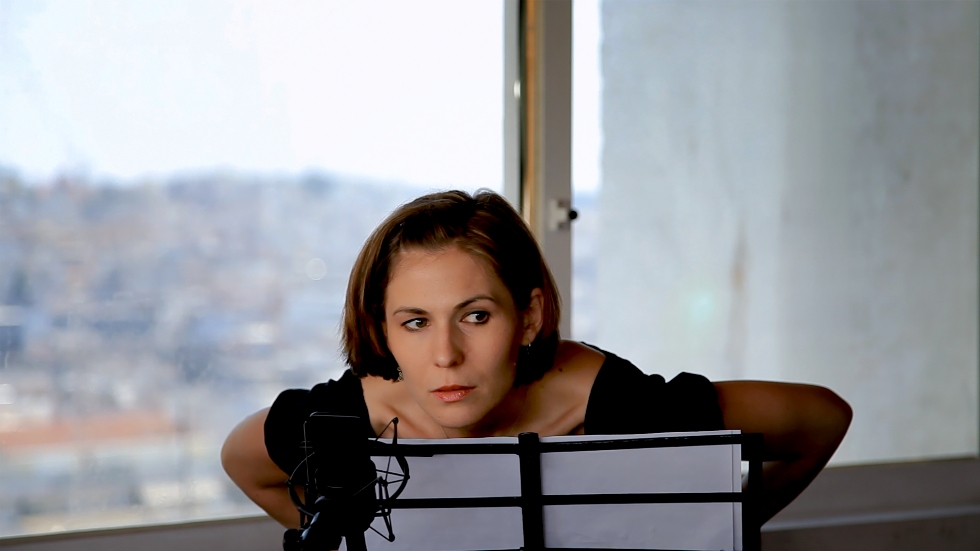
Johanna Krumin, “Dance Fight Love Die: With Mikis on the road” (2018)
Editing extensive material was a deciding factor in making this film. How did you work on it?
One of the most interesting and exciting experiences during my work on this film resulted from my decision to consciously mix different aesthetic elements during shooting and editing and to make them an important component of the film. The historical material that I had shot was edited by the extremely gifted young artist and musician Cleopatra Dimitriou – it took us more than a year to select and edit the 50 minutes for our film from the 600 hours of available footage, something that would not have been possible without my co-author Ina Kutulas. As I already mentioned, she had carried out the elaborate logging. The movie scenes, on the other hand, were edited by one of the best editors in Europe, Yannis Sakaridis, who is also a fantastic director (“America Square”). The third level of the film, that is, the cover versions of many Theodorakis songs by artists like Francesco Diaz, Alexia, Deerhoof, Dulce Pontes, Air Cushion Finish, Johanna Krumin, Sebastian Schwab, Microphone Mafia & Bejaranos, Melentini, Kaliopi Vetta, Maria Papageorgiou and others, I gave to various young filmmakers to work on or edit, people such as Stella Kalafati, Zoe Chressanthis, Antonia Gogin, Achilleas Gatsopoulos, Dimitris Argyriou etc. Moreover, James Chressanthis agreed to film and edit the Berlin scenes of our film. And let’s not forget that it was crucial for the film that my relatively badly shot footage from 1987 to 2017 was counteracted by the professional filming by our DOP Mike Geranios of the scenes in the feature film. This strong qualitative and aesthetic contrast, which results from the contrast between my documentary material and Mike’s wonderfully filmed scenes, gives rise to the basic framework of the whole film, so that it does not fall apart, but is held together as all the material is bound together by the spine provided by these scenes in the feature film.
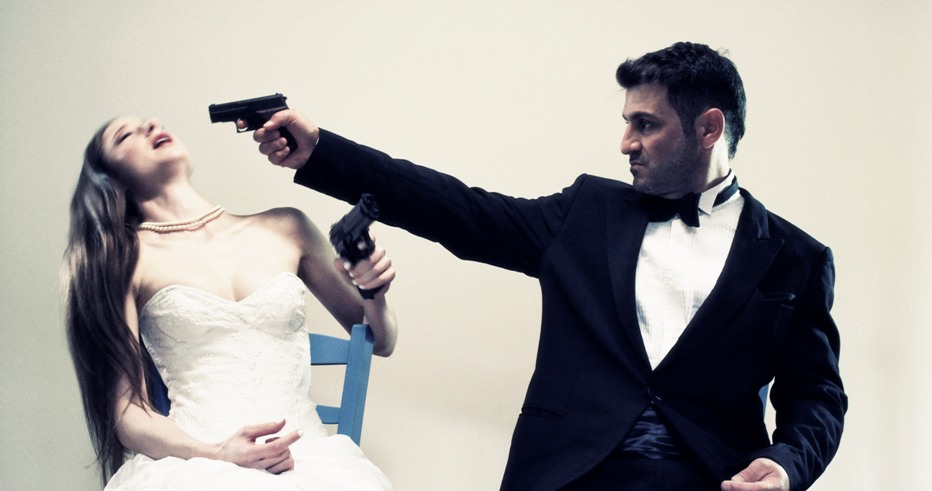
Sandra Von Ruffin, Stathis Papadopoulos, “Dance Fight Love Die: With Mikis on the road” (2018)
What is the function of the marriage subplot?
The 10 feature scenes of the wedding story of Marina and Akar have a kind of multifunction in the film. They give the opportunity to experience the cinema of the 21st century and to bear the poor film quality of the historical material which I had shot with unprofessional cameras in the course of those 30 years. Because this old material, technically speaking, is not only decaying, but was also badly shot by me as an non-professional, the material had to be quickly edited and elaborately reconstructed. However – I could have made at most a 20-minute film out of it; one couldn’t have endured more. The feature film scenes, shot magnificently in 4k by Mike Geranios with a RED Epic camera, give the film the necessary cinema format. On the other hand this fictional level allowed me to create epic film scenes (which would have been impossible with the other material) and to use as their musical foundation the great arias from the Theodorakis operas, which otherwise would not have been included in the soundtrack. And thirdly, these ten silent film scenes, played by the two fantastic lead actors Sandra von Ruffin and Stathis Papadopoulos, relate in a very poetic way the story of “love”, “dance”, “strife” and “death” in the work and in the life of this exceptional artist Mikis Theodorakis. Indeed in an abstractly artistic way, as a counterpart to the documentary shots – that’s why it’s a docu-fiction film. In terms of content, the story of Marina and Akar’s wedding day, in which Panaretos appears as a third party, is inspired by the Rodolino story from Mikis Theodorakis’s autobiography, “The Paths of the Archangel”.
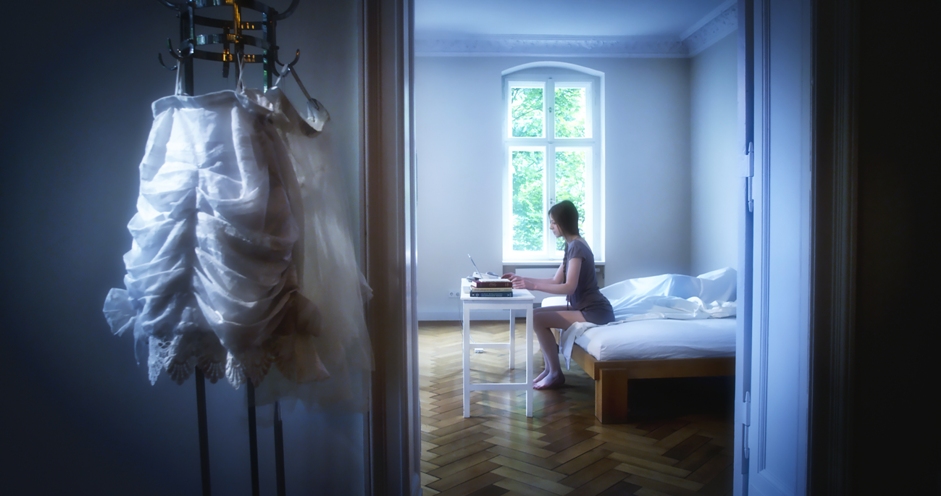
Sandra Von Ruffin, “Dance Fight Love Die: With Mikis on the road” (2018)
Your documentary is exploring a non – narrative, experimental film, combining genres and forms of art. Would you like to elaborate on your artistic choices?
The film is many things, but overall it is certainly a music film. And as I just mentioned, it’s also a docu-fiction, because I combine documentary material with silent film scenes. “But “Dance Fight Love Die” is also an associative essay-film, as well as a road movie. Sixty different musical piecescorrespond to 60 short stories. Additionally, the film is a very distinctive artist’s biography that tries to answer the question: What is Art? … And with “Dance Fight Love Die” I also tried to establish a new music film genre, something I began with “Recycling Medea” (2014), and now want to continue with “Electra”, our next film project. As I couldn’t find any role models, I had to create something myself.
 You have a prolific career in Germany. You are founder of the German-Greek Cultural Association. You also were the initiator of Hellas Filmbox Berlin as an opening for a constructive dialogue between Greece and Germany and as an affirmative artistic response to the wave of negative coverage of news from Greece in Germany. How has the perception of Greece in German society evolved over the last years?
You have a prolific career in Germany. You are founder of the German-Greek Cultural Association. You also were the initiator of Hellas Filmbox Berlin as an opening for a constructive dialogue between Greece and Germany and as an affirmative artistic response to the wave of negative coverage of news from Greece in Germany. How has the perception of Greece in German society evolved over the last years?
Compared to the period 2010-2015, when Greece was an ongoing topic for Germany, these days one could almost get the impression that Greece is no longer an issue in Germany at all. While on some days the news about Greece used to arrive “almost every second”, now it is only very sporadic. For us, however, the Greek-German reality is much more than just what is currently being discussed in the media. Germany, Greece: two terms pushed back and forth; unrealistically, in our opinion. It was unbearable to experience that at that time; Greece was only reported about in a negative way. For us, an unbelievable, an unacceptable process. In the meantime, alarm bells were ringing in Germany on a daily basis, with discussions on the rise of hatred and anger in Germany becoming a serious threat to democracy. It is not clear whether Germany will manage to save what still exists of its democratic conditions. Paradoxically (and tragically, of course), not only both countries, but the whole of Europe has this problem now. However, both countries also have outstanding artistic potential and are generate creative impulses. Art is still a corrective. That’s why we went to the workshop together with many others and founded Hellas Filmbox Berlin. The film festival was supposed to be an opportunity to simply see a lot of films from and about Greece. Even if you think you can’t change anything, you can still choose between falling asleep and staying awake. You can dance, fall in love, do something completely “different”. All of that is necessary. As the title of our film underlines: “Dance Fight Love Die”. That’s what all the movies in Hellas Filmbox have to offer: Reason and emotion. Action and relaxation. Love and abandonment. Death and life.
* Interview by Florentia Kiortsi. Special thanks to Nikolaos Vlahakis.




